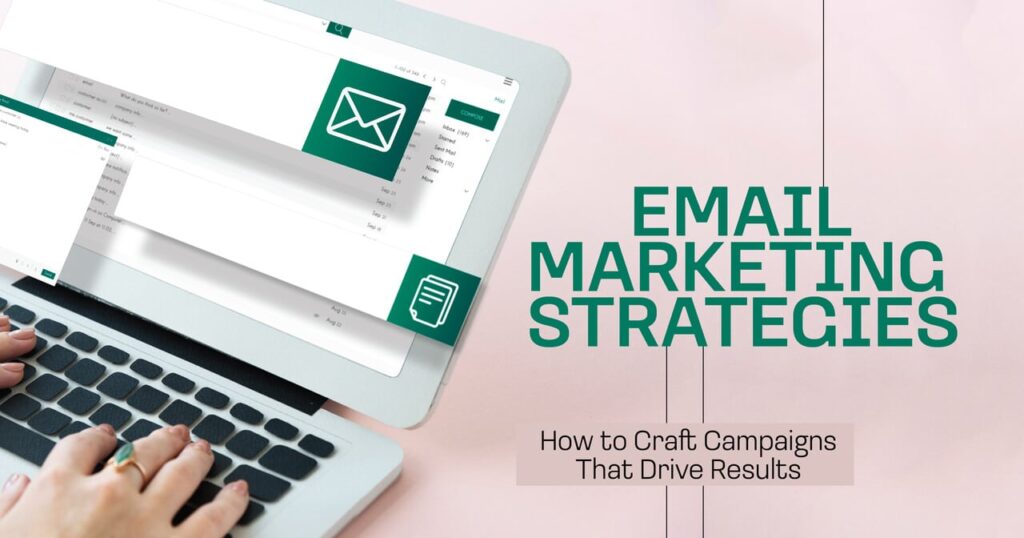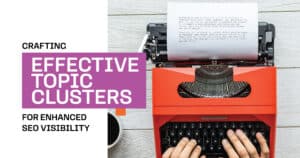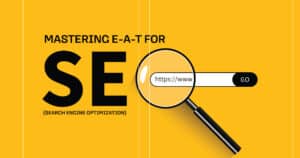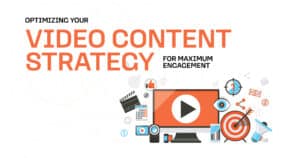Hey there! If you’re diving into email marketing or looking to sharpen your skills, you’re in the right place. Email marketing isn’t just about sending messages into the void; it’s about crafting email campaigns that connect, engage, and convert.
Essential Takeaways:
- Segment Your Audience: Tailor emails by email segmentation for more personalized and relevant messaging.
- Craft Strong Subject Lines: Create engaging, concise email subjects encouraging opens. A/B test to find what works best.
- Continuously Optimize: Track key metrics and refine your campaigns based on performance to maximize results.
Today, we’re going to explore how you can create effective email marketing campaigns that not only reach your target audience but also drive results. We’ll cover everything from understanding why email marketing still rocks to diving into specific strategies and techniques that make your campaigns shine.
The Power of Email Marketing
Why Email Marketing Still Matters
Email marketing still holds its ground in an era of booming social media and other digital marketing channels. Let me reassure you: it does. Despite the ever-evolving digital landscape, email marketing remains one of the most effective ways to reach and engage your audience.
Think about it: email has been around since the early days of the internet, and it’s still here. Why? Because it works. According to recent studies, businesses can expect an average return of $42 for every dollar spent on email marketing. That’s a staggering ROI! It’s not just about reaching your audience; it’s about ensuring your message hits home and encourages action.
Understanding Your Audience
If you want your email marketing to succeed, you must know who you’re talking to. Effective email marketing starts with understanding your audience, not just sending a generic message to a massive email list.
Segmenting your email list is one of the best ways to ensure your messages are relevant. For example, you might segment your list based on demographics, past purchase behavior, or engagement levels. This allows you to tailor your emails to meet the specific needs and interests of different audience segments. Additionally, analyzing purchase histories can enhance your email marketing strategies by targeting users based on previous interactions.
Creating buyer personas can also help you understand your audience better. These are detailed profiles that represent your ideal customers, including age, occupation, interests, and pain points. By crafting your emails with these personas in mind, you can create messages that resonate deeply with your audience.
Crafting Effective Email Campaigns
Writing Compelling Subject Lines
The subject line is your first impression—make it count. It’s the gateway to your email; if it doesn’t grab attention, your email might never be opened. Crafting a compelling subject line involves a mix of creativity and strategy.
Here’s a tip: keep it short and sweet. Subject lines with 6-10 words have been shown to have the highest open rates. Use action-oriented language and create a sense of urgency or curiosity. For instance, “Unlock Your Exclusive Offer Today” or “Don’t Miss Out—Sale Ends Soon!”
Designing Engaging Email Content
Once your subject line has done its job, it’s time to focus on the content of your email. Your email design and layout play a crucial role in keeping your audience engaged.
Start with a clean and attractive design that incorporates responsive email design principles, ensuring your emails look great across all email clients and screen sizes. Use visuals to break up the text and make your email more appealing. High-quality images, videos, and infographics can make a big difference. But remember, many emails are opened on mobile devices, so ensure your design is mobile-friendly.
Your copy should be concise and engaging. Avoid long paragraphs and use bullet points to highlight critical information. A well-written email should quickly convey its message and prompt the reader to take action.
Personalization and Dynamic Content
Personalization goes beyond just using the recipient’s name in the subject line. It’s about tailoring your content to the individual’s preferences and behavior. For example, you can use dynamic content to show different offers or information based on the recipient’s past interactions with your brand.
Consider implementing personalized recommendations or content based on previous purchases or browsing history. This will not only make your emails more relevant but also increase the likelihood of engagement and conversion.
Implementing Effective Email Campaign Strategies
Types of Emails
Understanding the types of emails you can send is crucial for a successful email marketing strategy. Some common types include:
- Promotional Emails: Focused on driving sales and sharing special offers.
- Transactional Emails: Sent after specific actions, such as purchase confirmations or cart abandonment reminders (often referred to as cart emails).
- Follow-Up Emails: Aimed at engaging subscribers after they take action or after specific time intervals.
- Newsletters: Regular updates that provide valuable content and keep your audience informed.
Timing and Frequency
When it comes to email marketing, timing is everything. You want to send your emails at times when your audience is most likely to read them. While there’s no one-size-fits-all answer, studies suggest that mid-week and mid-morning are often optimal times.
Frequency is another crucial aspect. Bombarding your audience with emails can lead to high unsubscribe rates, and sending too infrequently can lead to disengagement. Find a balance that works for your audience and follow a consistent schedule to maintain customer relationships.
A/B Testing and Optimization
A/B testing is like a scientific experiment for your emails. It involves sending two versions of an email to a small segment of your list to see which one performs better. This can help you understand what resonates with your audience and refine your approach.
Test elements include email subjects, email copy, visuals, and calls to action. Use the results to optimize your email marketing strategies and improve your email marketing campaign.
Measuring Success and Analyzing Metrics
To know if your email campaigns are effective, you must measure their success. Key metrics to track include open rates, click-through rates, conversion rates, and unsubscribe rates.
Key Metrics for Evaluation
- Email Deliverability: The percentage of emails that successfully land in the inbox versus the spam folder.
- Engagement Rates: Metrics that gauge how recipients interact with your emails, including open rates and click rates.
- Email List Growth Rate: Measures how quickly your subscriber list is growing.
- Revenue per Email: Calculates how much revenue each email generates, helping gauge overall performance.
- Email Marketing KPIs: Establish goals and key performance indicators to assess the effectiveness of your campaigns.
Analyzing these metrics helps you understand what’s working and what needs improvement. For example, a low open rate might indicate that your subject lines need work, while a high unsubscribe rate could suggest that your content isn’t meeting your audience’s expectations.
Advanced Email Marketing Techniques
Automation and Drip Campaigns
Automation can take your email marketing to the next level. Setting up automated workflows allows you to send targeted messages based on specific triggers, such as a subscriber signing up for your list or abandoning a cart.
Drip campaigns are automated campaigns that send pre-written emails over time. These are great for nurturing leads and guiding them through the customer journey. For example, you could use a drip campaign to educate new subscribers about your products or services and encourage them to purchase.
Leveraging User-Generated Content
User-generated content (UGC) can add authenticity and trustworthiness to your email campaigns. This includes customer reviews, testimonials, and social proof. Incorporating UGC into your emails can help build credibility and encourage other subscribers to engage with your brand.
For instance, you might feature a glowing review from a satisfied customer or showcase user photos of your product in action. This makes your emails more engaging and highlights the real-world value of your offerings.
Conclusion
There you have it! We’ve covered the essential strategies and techniques for crafting email campaigns that drive results. From understanding your audience to implementing advanced tactics, these insights will help you create compelling emails that engage and convert.
Remember, email marketing is not a one-time effort; it’s an ongoing process of testing, learning, and optimizing. By applying these strategies and continuously refining your approach, you’ll be well on your way to achieving successful email marketing.
Call to Action:
Ready to supercharge your email marketing? Start applying these strategies today and watch your campaigns flourish. For more expert tips and personalized advice, subscribe to our email newsletter or contact us directly. Let’s turn your email marketing into a powerful tool for driving results!
FAQs
Best Time to Send Emails?
Mid-morning on weekdays (Tuesday-Thursday) is often optimal, but A/B testing helps find the best time for your audience.
How Often Should I Send Emails?
Aim for 1-3 emails per week. Adjust based on audience preferences to avoid overwhelming or disengaging them.
What’s a Good Open Rate?
A 15-25% open rate is typical. Improve this with better email subjects and timing.
How Can I Reduce Unsubscribes?
Personalize content, offer value, and segment your list for relevance.
What Are Drip Campaigns?
Drip campaigns are automated emails based on user actions, ideal for nurturing leads and guiding them through the funnel.







